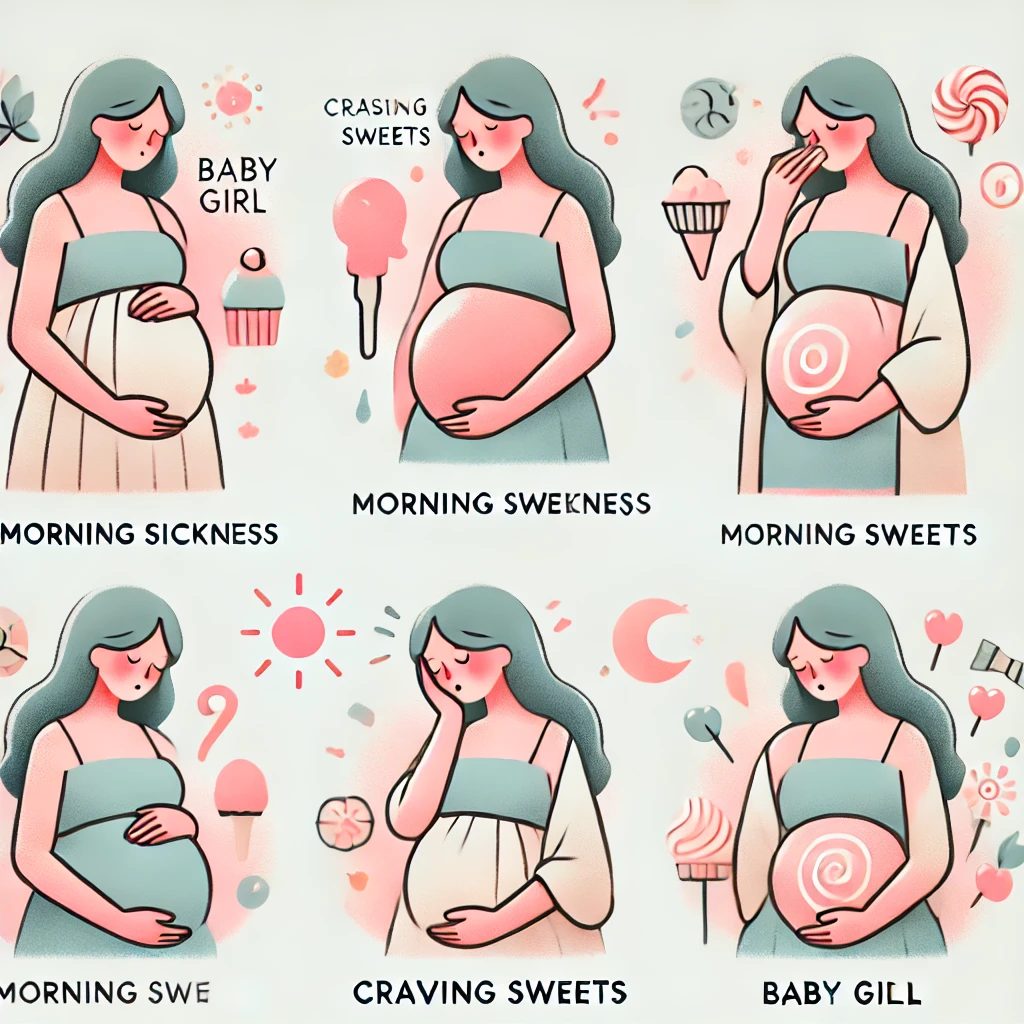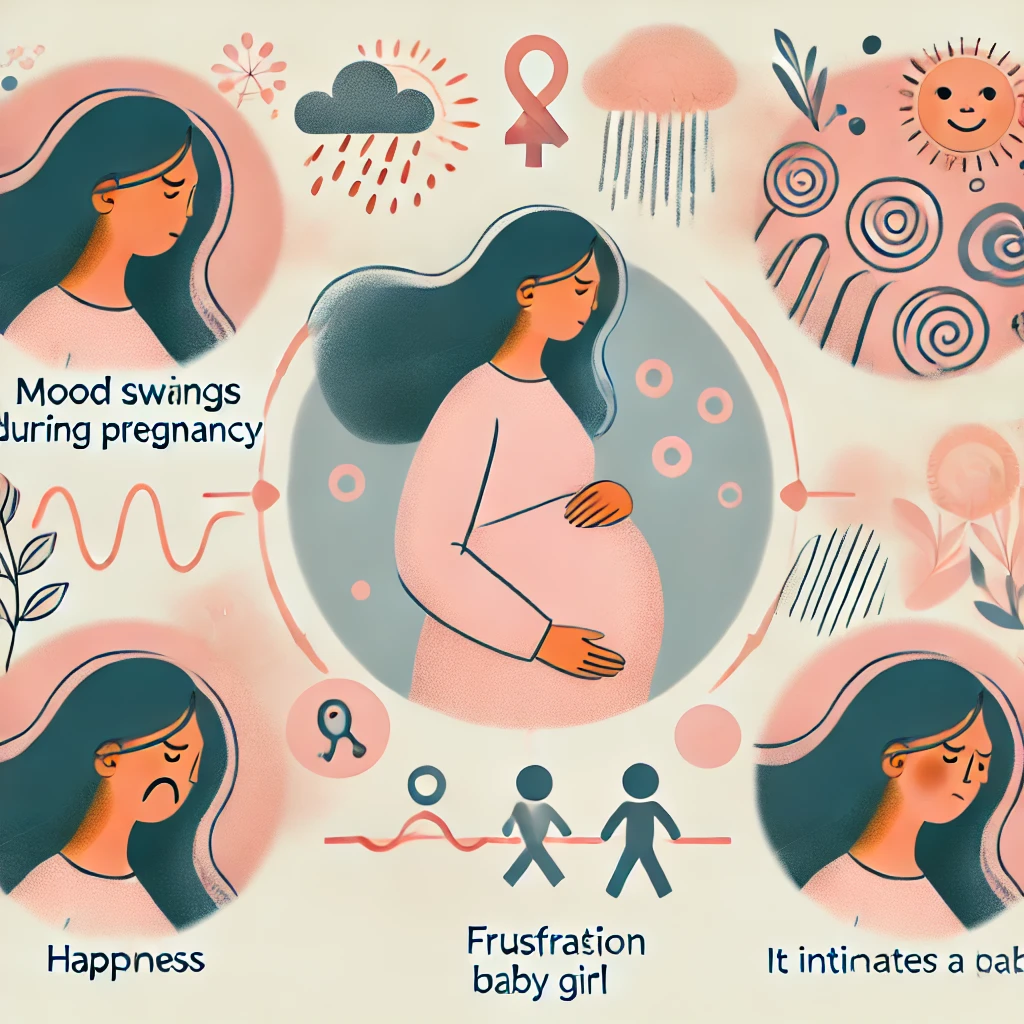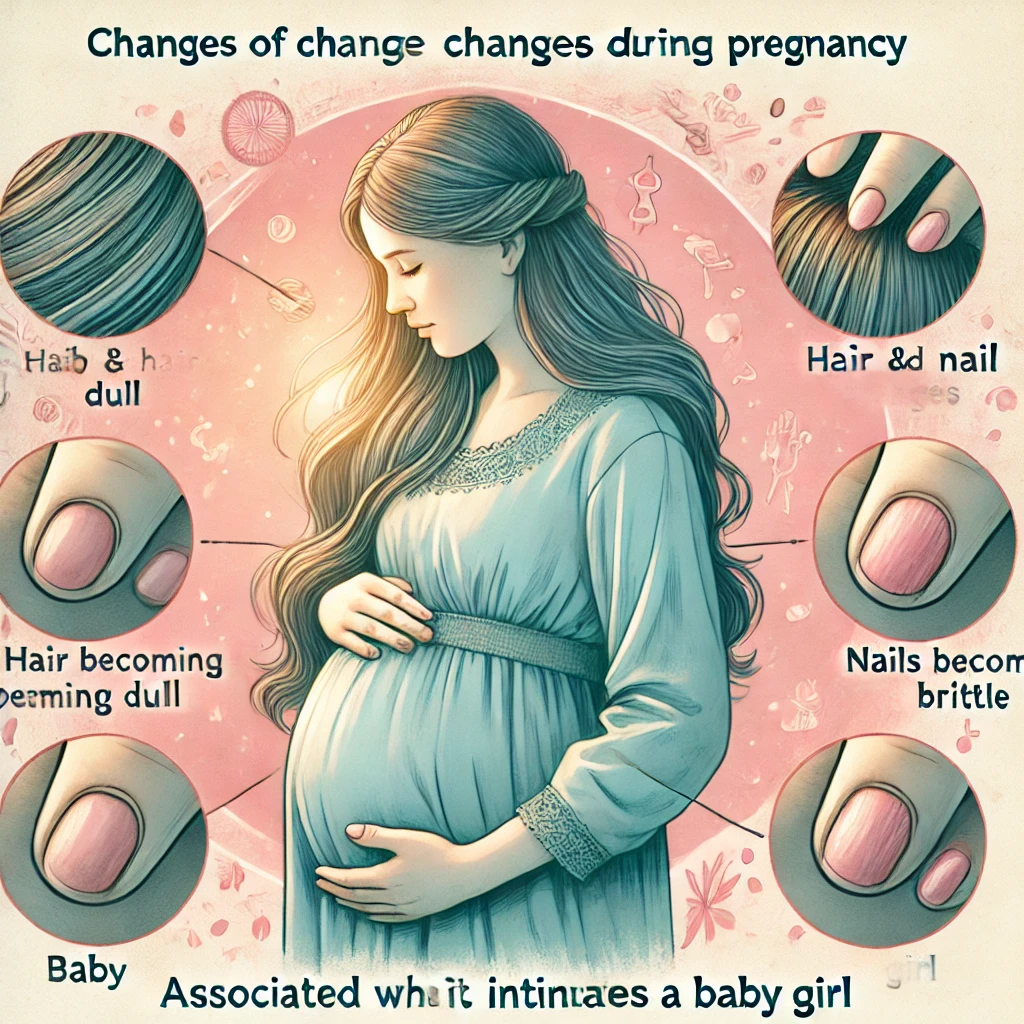Signs of Being Pregnant with a Baby Girl: Exploring Some Folk Beliefs
Expectant mothers are often very curious about their baby's gender as soon as they find out they are pregnant. While the most accurate way to determine a baby's gender is through medical tests such as ultrasound or genetic testing, many women enjoy speculating based on traditional pregnancy signs. This article will explore some of the most common signs of being pregnant with a baby girl, along with scientific explanations where applicable.

Morning Sickness
One of the most commonly cited signs of being pregnant with a baby girl is experiencing severe morning sickness. According to some studies, pregnant women carrying girls tend to have higher levels of the hormone human chorionic gonadotropin (hCG), which is associated with morning sickness.
- Scientific Insight: Research suggests that women carrying girls may produce more hCG, leading to increased nausea and vomiting, especially during the first trimester. However, it's important to note that morning sickness can vary greatly among pregnant women, regardless of the baby’s gender.
Cravings for Sweets
Craving sweet foods like chocolate, ice cream, and candy is another sign traditionally associated with carrying a baby girl. This belief is rooted in the idea that sugar cravings indicate the presence of female hormones in the womb.
- Scientific Insight: There’s no scientific evidence to support the notion that specific cravings are linked to the gender of the fetus. Cravings during pregnancy are likely influenced by hormonal changes, but they do not necessarily predict whether you're having a boy or a girl.

The Shape of the Belly
It is often said that if a pregnant woman's belly is high and round, she’s likely carrying a girl. This belief stems from the idea that a girl’s fetus sits higher in the womb, giving the belly a different shape compared to when carrying a boy.
- Scientific Insight: The shape and position of a pregnant woman’s belly are more likely influenced by her body type, the position of the fetus, and the amount of amniotic fluid rather than the baby’s gender. Thus, the belly shape is not a reliable indicator of whether you're having a boy or a girl.
Skin Changes and Acne
Another popular belief is that pregnant women carrying girls tend to experience more skin changes, including acne. This is thought to be due to the increased levels of female hormones, which can affect the skin’s oil production.
- Scientific Insight: Hormonal changes during pregnancy can indeed lead to increased oil production and acne, but these changes are not necessarily linked to the baby’s gender. Pregnant women may experience skin changes regardless of whether they are carrying a boy or a girl.
Baby's Heart Rate
Some people believe that the fetal heart rate can indicate the baby's gender. It is said that a fetal heart rate above 140 beats per minute suggests a baby girl, while a slower rate might indicate a baby boy.
- Scientific Insight: Numerous studies have shown that there is no significant difference in fetal heart rate based on the baby’s gender. The heart rate is more influenced by the baby's activity level, gestational age, and other factors rather than the gender.
Carrying Weight in the Hips and Thighs
It is commonly believed that if a pregnant woman is carrying more weight in her hips and thighs, she is likely to be having a girl. This idea is based on the notion that girls "steal" their mother’s beauty, leading to more fat accumulation in these areas.
- Scientific Insight: Weight gain patterns during pregnancy are influenced by various factors, including genetics, diet, and overall health, rather than the baby's gender. Therefore, this sign is not scientifically supported as a reliable way to predict a baby’s gender.
Mood Swings
Many believe that carrying a girl leads to more intense mood swings due to the extra estrogen produced by the female fetus. This can result in more pronounced emotional fluctuations during pregnancy.
- Scientific Insight: Mood swings during pregnancy are primarily caused by hormonal changes, particularly fluctuations in progesterone and estrogen. While these changes can be significant, they are not necessarily related to the gender of the baby.

The Ring Test
The ring test is an old wives' tale where a pregnant woman’s wedding ring is dangled over her belly. If the ring swings in a circular motion, it is believed to indicate a girl, while back-and-forth motion suggests a boy.
- Scientific Insight: The ring test is purely a fun tradition with no scientific basis. The movement of the ring is likely due to the subconscious movements of the person holding the string rather than any indication of the baby’s gender.
Cold Feet
Some people believe that if a pregnant woman experiences cold feet, she is more likely carrying a boy. Conversely, warm feet are thought to suggest a girl.
- Scientific Insight: Changes in circulation during pregnancy can lead to cold feet, but this is not related to the baby’s gender. Cold feet can be caused by a variety of factors, including hormonal changes, but it is not a reliable indicator of whether you’re having a boy or a girl.
Sleep Position
According to popular belief, if a pregnant woman prefers to sleep on her right side, she’s more likely to be carrying a girl.
- Scientific Insight: Sleep position preferences during pregnancy are influenced by comfort and body changes rather than the baby’s gender. There is no scientific evidence to support the idea that sleeping on a particular side indicates the gender of the baby.
Hair and Nail Changes
It is often said that if a woman’s hair becomes dull and her nails become brittle during pregnancy, she is likely carrying a girl. The idea is that the female hormones from the baby affect the mother’s hair and nails.
- Scientific Insight: Changes in hair and nails during pregnancy are more likely due to hormonal fluctuations and the body's increased need for nutrients rather than the gender of the fetus. These changes can occur regardless of whether the baby is a boy or a girl.

Mother's Intuition
Many women claim to have a strong intuition about their baby's gender early in pregnancy. This "gut feeling" is often cited as a sign of the baby's gender.
- Scientific Insight: While mother's intuition can be surprisingly accurate in some cases, it is not a scientifically reliable method for predicting the baby’s gender. Intuition is influenced by various factors, including personal beliefs, desires, and experiences.
Food Aversions
It is said that if a pregnant woman develops aversions to certain foods, especially protein-rich foods like meat, she might be carrying a girl.
- Scientific Insight: Food aversions are common during pregnancy and are caused by hormonal changes affecting taste and smell. These aversions are not linked to the baby's gender.
Breast Size
Some people believe that if a woman’s left breast becomes larger than her right during pregnancy, she is carrying a girl.
- Scientific Insight: Changes in breast size during pregnancy are common due to hormonal fluctuations and preparation for breastfeeding. These changes are not related to the gender of the baby.
The "Glow" of Pregnancy
A common belief is that if a woman is glowing and her skin looks radiant during pregnancy, she is likely carrying a girl. Conversely, dull skin might indicate a boy.
- Scientific Insight: The "pregnancy glow" is typically caused by increased blood circulation and hormonal changes that lead to oilier skin. This glow is not linked to the baby’s gender.
The Linea Nigra
The appearance of the linea nigra, a dark line that runs down the center of the belly, is sometimes believed to indicate the baby’s gender. It is said that a linea nigra that runs above the belly button suggests a girl.
- Scientific Insight: The linea nigra is caused by increased pigmentation due to hormonal changes and is not related to the gender of the baby. The length or position of this line does not indicate whether you are having a boy or a girl.
In Conclusion 'Signs of Being Pregnant with a Baby Girl'
While there are many traditional beliefs and old wives' tales about predicting a baby’s gender, most of them lack scientific support. The most reliable way to determine the gender of your baby is through medical tests such as ultrasound or genetic testing. However, these signs and symptoms can be a fun way to speculate and guess the gender before it is confirmed. Remember that every pregnancy is unique, and the presence or absence of these signs does not necessarily indicate the gender of the baby.
See more
When Can the Fetal Heartbeat Be Heard? The Joy of Pregnant Women
Foods to Increase Fetal Weight
Website: https://wilimedia.com/
Fanpage: https://www.facebook.com/wilimediavn
Mail: [email protected]